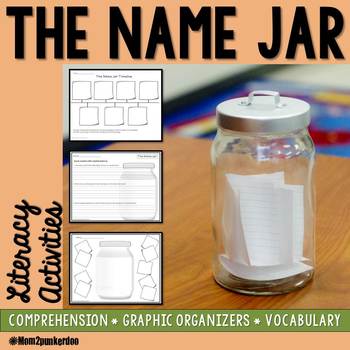It seems like a ridiculous title for a post, doesn't it? Of course you use stories to teach story problems. So what am I talking about?
About 3 years ago, I started to analyze the stories that I was actually using to teach problem solving. And this analysis changed the way I looked at my teaching and my attitude toward story problems.
I have to be honest, story problems...not my favorite. It was something I dreaded to teach each and every year. The stories were always boring to me, disjointed, unrelated, and hard. Nothing seemed to connect. Well...and because I did not enjoy teaching these problems, my students did not either.
Then I found a free resource called: Posing and Solving Story Problems with Story Boxes by Donna Burk and Allyn Snider. This is not a new resource. The copyright on it is 1994; therefore, some of you may even use this resource already! The points that are made throughout the introduction hit my teaching heart and my beliefs as a math teacher. They talk about the importance of constructive struggle and students solving problems in ways that make sense to them. Yes and Yes!
But what really hooked me in...something they call "Story Boxes." Basically, they are talking about themes. The stories used in the problems all follow themes that interest the students in their everyday lives. Donna Burk and Allyn Snider share a quote from the California State Mathematical Framework that explains it well, "When mathematical ideas help students understand situations, the ideas are not only more interesting and accessible but also easier to remember and use."
Now when I teach story problems, it is spread out throughout the year into different themes. Some examples that I have pulled from the resource above: Bus Problems, Cookie Store Problems, Critter Issues, or Teddy Bear Store. With each new theme introduced, my teammate and I work hard to make it a big deal. For example, when we begin our Bus Problems, the classroom turns into a bus for the day. Students decide where we are going. Then they get on and off the bus. We add and subtract to solve a variety of issues that a bus driver may have.
What we have found by setting up the "scene" for our new theme, the students get excited! Instead of dreading story problems...they ASK for them. They want to know when our next set of them will start!
And just as the quote stated above, because the themes are meaningful to their lives, our students work hard to visualize the story, understand, and solve the problem in a way that make senses to them.
Once the theme is established and excitement is in the air, students work in their guided math groups on problems that all revolve around the theme. The manipulatives that are available reflect the theme, as well. For example, for our bus problems, students use lima beans with faces and a bus template. For our gift giving problems, we have painted cubes and wrapped parcels available. For the bear store problems, we provide bears with a store and delivery truck template.
Putting stories into my story problem instruction has really changed me and my attitude. The learning is no longer disjointed, but meaningful and memorable. My attitude has caused a shift in the way my students approach story problems, as well. They actually like them :)
What about you? Do you already use story problem themes in your teaching? What excites you about problem solving?
Using Stories to Teach Story Problems
Powered by Blogger.












































Fabulous post Em! I love the photos!😃
ReplyDeleteThank you so much!! My math brain has changed so much in the past few years and I am grateful!
DeleteStory problems actually look fun! :)
ReplyDeleteAmanda
Thank you!! I agree with you! It is the first time that I discovered what fun they could be!
Delete